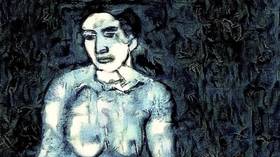Drug raid yields stolen Picasso – police
Iraqi law enforcement claimed that a painting worth untold millions of dollars turned up in a narcotics bust
Iraqi police got more than they bargained for in a drug raid over the weekend in Diyala province, recovering what they claim is a stolen painting produced by the legendary Spanish artist Pablo Picasso.
The artwork was seized on Saturday after being found in the possession of three people targeted in a narcotics raid, the state-run Iraqi News Agency reported, citing a statement by the country’s Interior Ministry. Authorities offered no additional details on the painting, except to say that it’s worth “millions of dollars.”
“The drug trade is linked to many crimes, including murder, theft, kidnapping, rape, gang formation, corruption and family disintegration, until it reaches the antiquities trade,” said Colonel Bilal Sobhi, director of the ministry’s anti-narcotics media office.
The Iraqi government has widened its crackdown on drug trafficking since last month, arresting 1,300 suspects and seizing 44 kilograms of narcotics. Sobhi said the ministry also has captured 37 kilograms of stimulants, including “crystal.” He credited intelligence gathered from Iraqi citizens for playing a large role in breaking up drug gangs, such as the group caught with the stolen painting.
Picasso’s works are among the world’s most valuable paintings. One of his paintings sold for $179.4 million, then a record price, in May 2015, reportedly to Qatar’s royal Al Thani family. At least four others have fetched more than $100 million. The artist died in 1973, after a prolific career spanning eight decades.
Iraqi police reportedly claimed to have seized another Picasso painting in 2009, saying they had arrested a man who was trying to sell the piece for $450,000. The painting, entitled ‘The Naked Woman’, was allegedly stolen from the National Museum of Kuwait during Iraq’s invasion of the neighboring state in 1990. Officials at the Louvre in Paris and the National Museum of Kuwait later claimed that the painting was a fake.
You can share this story on social media:








Comments are closed.